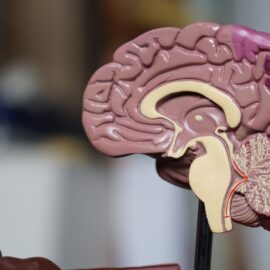

This article is an excerpt from the Shortform book guide to "Keep Sharp" by Sanjay Gupta. Shortform has the world's best summaries and analyses of books you should be reading.
Like this article? Sign up for a free trial here .
How does exercise benefit the brain? Can regular exercise ward off age-related cognitive decline?
Regular exercise is the single most important thing to do for your brain’s health. Not only does exercise promote clarity of thinking, but it can also help slow down the rate of cognitive decline as you age.
Here’s a look at exercise and the brain.
Exercise for Brain Health
In discussing exercise and the brain, Gupta describes two main ways exercise benefits the brain:
1. Exercise controls blood sugar: When you exercise, the sugar in your blood is used to fuel the muscles in your body instead of staying in your bloodstream. This prevents consistently high blood sugar and keeps your insulin levels stable.
(Shortform note: Although exercise generally lowers blood sugar levels, it can also have the opposite effect. Some workouts, like heavy weightlifting, sprinting, and competitive sports, can increase hormones such as adrenaline, which raises glucose levels. Also, consuming too many carbs before a workout can lead to high blood sugar. To avoid this, experts recommend you choose moderately intense aerobic exercises or light weight training and that you avoid too many carbs before exercising.)
2. Exercise reduces stress: When you’re stressed, your body releases a hormone called cortisol, which has been linked to changes in the brain. People who experience chronic stress early in life are much more likely to suffer from mental problems and mood disorders later in life.
(Shortform note: How does exercise reduce stress? Research shows it’s through a release of hormones. Exercise, especially aerobic exercise, increases your body’s production of endorphins, or chemicals that naturally boost your mood and reduce pain. They are responsible for the “runner’s high” some feel after a long aerobic workout.)
Physical inactivity, on the other hand, sharply increases the risk of cognitive decline. Gupta points to a study that states that lack of exercise is the most significant risk factor in developing dementia. Prolonged sitting (sitting for eight or more hours a day) can be especially harmful. Not only does prolonged sitting increase blood sugar levels, but it also negatively affects blood fats, cholesterol, blood pressure, and leptin (the hormone that tells you when to stop eating). When your muscles are dormant for too long, they begin to break down and atrophy, and your body’s ability to break down calories is weakened.
(Shortform note: Gupta claims that prolonged sitting, even with regular exercise mixed in, can lead to an early death, but some studies refute this claim. A 2015 study of over 5,000 people found there were no associations between prolonged sitting and increased mortality rates. Another study examined the link between sitting and diabetes and came to a similar conclusion. The researchers from both studies recommend regular exercise, as no significant health effects were seen in participants who both exercised and sat for long periods of time.)
Exercise Tips
Knowing how important exercise is, how much do we need to do? Gupta says the good news is that it doesn’t take a lot to counteract the negative effects of inactivity. Aim for at least 30 minutes of exercise a day, five times a week. However, Gupta claims that if you want to get the most out of exercise, exercising more than an hour a day is now recommended. This is because, from an evolutionary perspective, humans have usually spent most of their day moving.
To get the most out of exercise, also aim for a mix of three forms of exercise: aerobic, strength, and interval training.
- Aerobic exercise: Aerobic exercise, also known as cardio (like jogging, swimming, biking, or even brisk walking) involves getting your heart rate and breathing up.
- Strength training: Strength training involves using weights or your own body weight to gain muscle mass. It’s important because muscles are crucial in burning calories and maintaining overall metabolic health.
- Interval training: Interval training involves alternating between various levels of speed and intensity in your workouts. This helps challenge the muscles and prevent them from plateauing.

———End of Preview———
Like what you just read? Read the rest of the world's best book summary and analysis of Sanjay Gupta's "Keep Sharp" at Shortform .
Here's what you'll find in our full Keep Sharp summary :
- The steps you can take to prevent cognitive decline such as Alzheimer’s
- How to keep your brain strong and resilient throughout your life
- Foods to eat and avoid to maintain brain health






